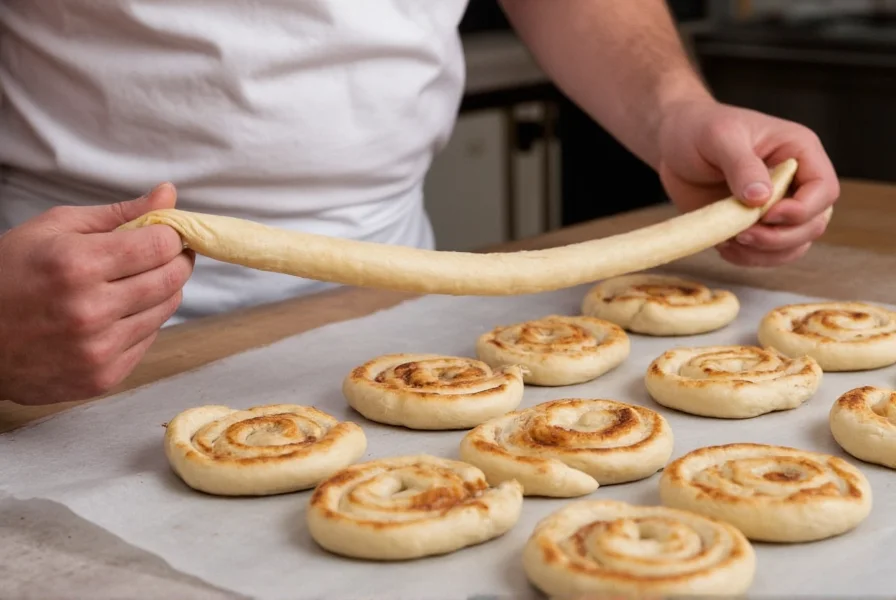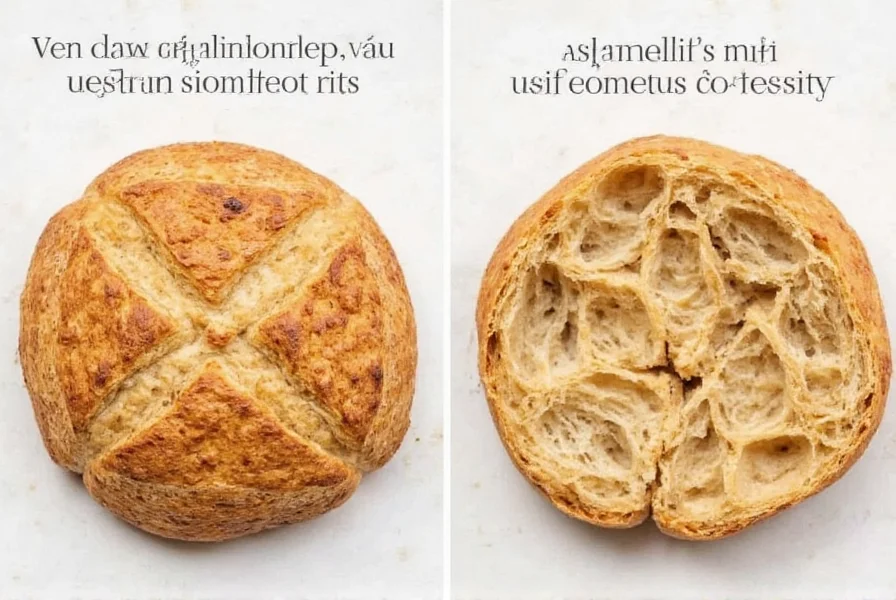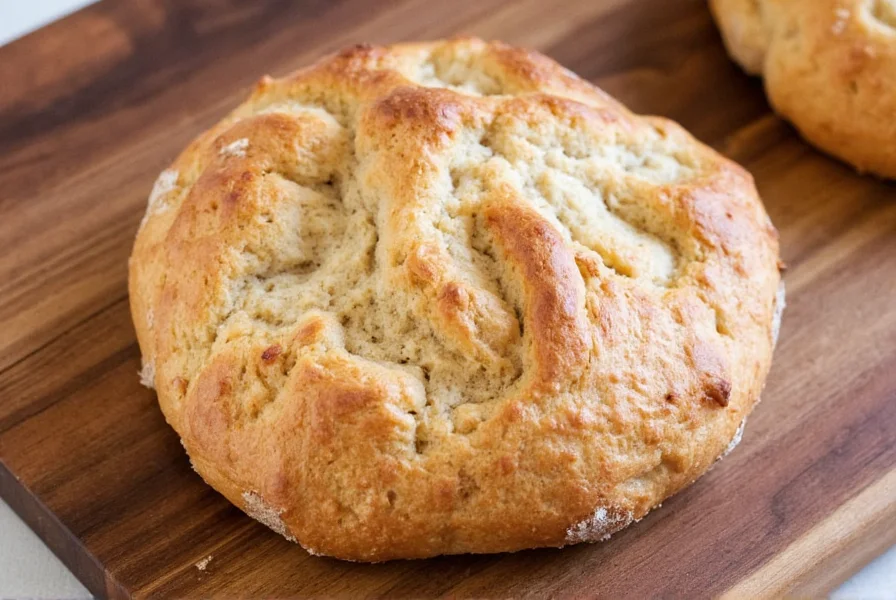Creating exceptional cinnamon focaccia sourdough requires understanding how sourdough's natural fermentation interacts with sweet cinnamon swirls. Unlike standard focaccia that uses commercial yeast, sourdough versions develop deeper flavor complexity through lactic acid bacteria activity during the extended fermentation period. The key challenge lies in balancing the dough's hydration (typically 75-80%) with the cinnamon sugar filling to prevent structural collapse while ensuring even flavor distribution.
The Science Behind Sourdough Cinnamon Integration
Sourdough's lower pH environment affects cinnamon's volatile compounds, mellowing its sharpness while enhancing warm, woody notes. Professional bakers recommend using Ceylon cinnamon rather than Cassia for sourdough applications because its more delicate flavor profile complements rather than overwhelms the bread's natural tang. The extended fermentation time of sourdough (12-18 hours) allows for better flavor integration compared to quick-rise versions.
| Ingredient | Standard Focaccia | Cinnamon Sourdough Focaccia |
|---|---|---|
| Leavening Agent | Instant yeast (2-3g) | Mature sourdough starter (20-25% of flour weight) |
| Hydration Level | 65-70% | 75-80% (accounts for filling moisture) |
| Fermentation Time | 2-3 hours | 12-18 hours (cold retard recommended) |
| Cinnamon Application | N/A | Layered filling (15-20g per loaf) |
Mastering the Cinnamon Swirl Technique
The most common failure point in cinnamon focaccia sourdough is filling leakage during baking. To prevent this, professional artisan bakers use a two-stage approach: first creating a thin 'glue layer' of honey or maple syrup (5-10g per loaf) before applying the cinnamon-sugar mixture. This creates adhesion between dough layers while adding subtle flavor complexity. The ideal cinnamon-to-sugar ratio for sourdough applications is 1:4, slightly lower than traditional cinnamon rolls to accommodate sourdough's pronounced flavor.

Temperature Control for Optimal Results
Sourdough's temperature sensitivity requires careful management when incorporating cinnamon. During bulk fermentation, maintain 75-78°F (24-26°C) to balance yeast activity with flavor development. When shaping, work quickly to prevent the dough temperature from dropping below 72°F (22°C), which would slow the final rise. The ideal oven spring occurs when dough enters the oven at precisely 78°F (25.5°C) - use an instant-read thermometer to verify before baking.
Troubleshooting Common Issues
Problem: Cinnamon bleeding into dough during proofing
Solution: Reduce filling moisture content by using cornstarch (1 tsp per 100g sugar) in your cinnamon mixture. Chill the shaped loaf for 20 minutes before baking to set the filling.
Problem: Uneven crumb structure with dense spots
Solution: Ensure your sourdough starter is at peak activity (4-6 hours after feeding) and maintain consistent dough temperature during bulk fermentation. Use the coil fold technique instead of traditional stretch-and-folds for better gas retention.

Advanced Flavor Pairing Options
For sophisticated sourdough cinnamon focaccia variations, consider these professional pairings that complement sourdough's natural acidity:
- Add 5g of orange zest per loaf to enhance cinnamon's floral notes
- Incorporate 10g of toasted walnuts per loaf for textural contrast
- Substitute 25% of water with cold-brew coffee for deeper flavor complexity
- Use muscovado sugar instead of white sugar in the filling for molasses undertones
Serving and Storage Recommendations
Cinnamon focaccia sourdough reaches peak flavor 2-3 hours after baking when the crumb structure fully sets. For optimal texture, slice with a serrated knife using a gentle sawing motion. Store leftovers in a linen-lined bread basket for up to 24 hours; beyond that, freeze individual slices wrapped in parchment paper. Never refrigerate sourdough bread as it accelerates staling.
Can I use active dry yeast instead of sourdough starter for cinnamon focaccia?
While possible, substituting commercial yeast eliminates the distinctive tangy complexity that defines sourdough cinnamon focaccia. If converting, reduce fermentation time to 3-4 hours total and decrease hydration by 5% to account for different gas production patterns.
Why does my cinnamon filling sink to the bottom during baking?
This occurs when the dough hasn't developed sufficient gluten strength to support the filling. Ensure proper windowpane development during mixing and use the coil fold technique during bulk fermentation to build stronger gluten networks that can hold the cinnamon swirl in place.
How do I adjust cinnamon focaccia sourdough for high altitude baking?
At elevations above 3,000 feet, reduce sourdough starter by 5-10% and increase salt by 0.5% to strengthen gluten. Shorten bulk fermentation by 2-3 hours and lower oven temperature by 25°F (14°C) to prevent over-expansion and filling collapse.
What's the ideal sourdough starter maturity for cinnamon focaccia?
Use starter at its peak expansion point (typically 4-6 hours after feeding at room temperature) when it shows numerous bubbles throughout and has doubled in volume. Starter that's overripe will make the dough too acidic, overpowering the cinnamon flavor.
Can I make cinnamon focaccia sourdough without a baking stone?
Yes, but you'll need to adjust technique. Use a heavy-duty rimmed baking sheet preheated in the oven. Create steam by placing a cast iron pan on the oven floor with 1/2 cup of boiling water. Rotate the pan halfway through baking for even browning, as sheet pans create more uneven heat distribution than baking stones.











 浙公网安备
33010002000092号
浙公网安备
33010002000092号 浙B2-20120091-4
浙B2-20120091-4